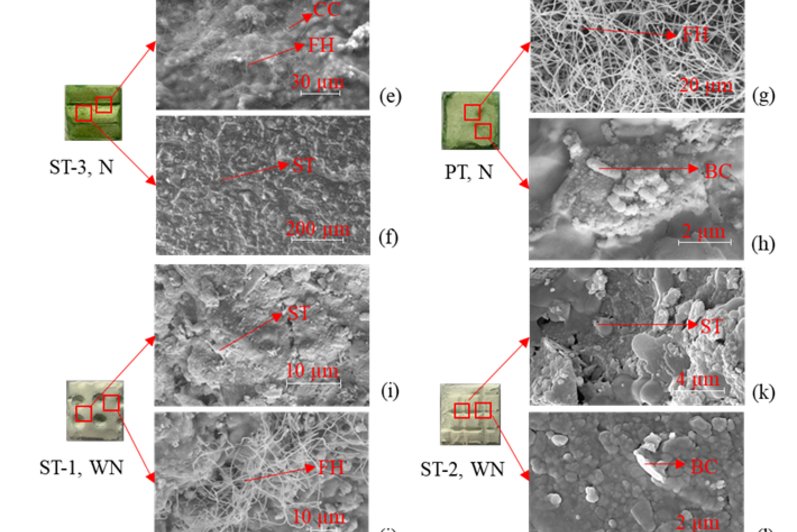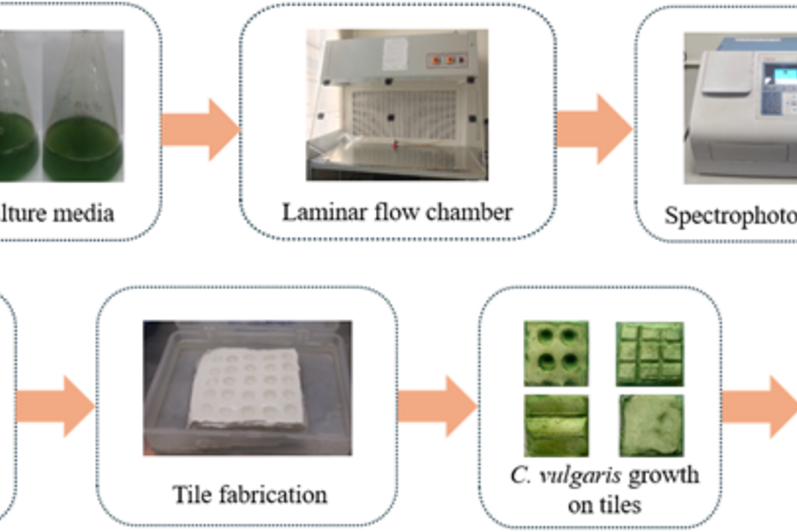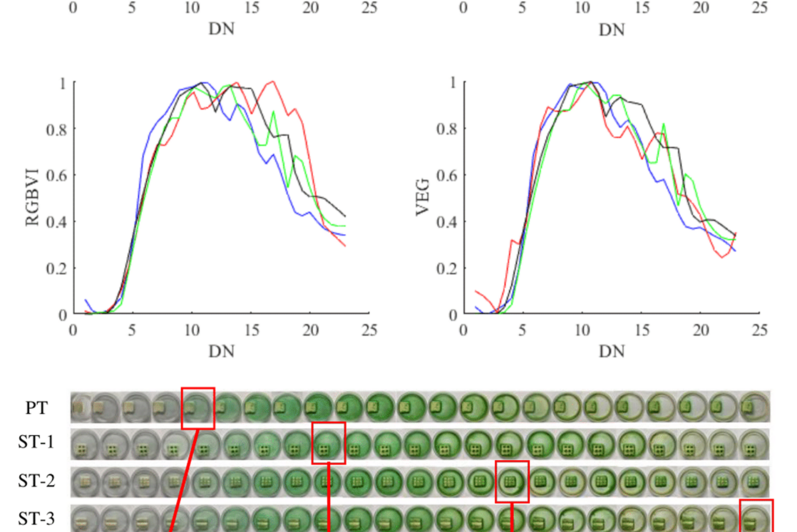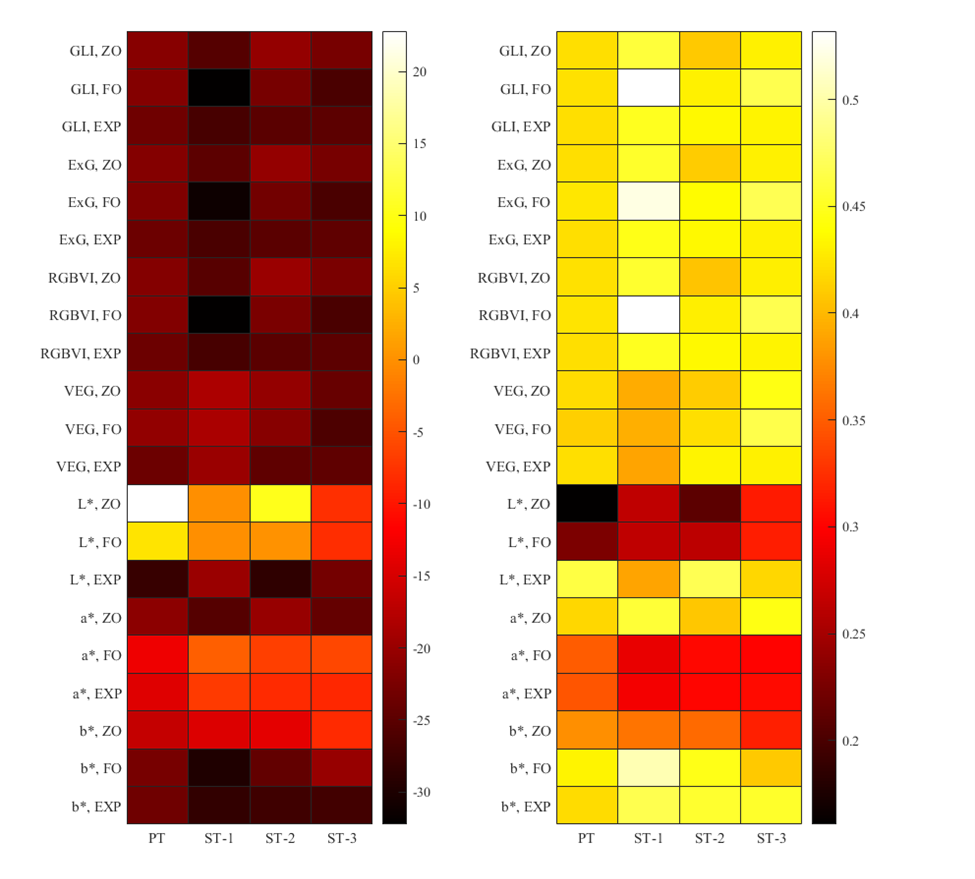To examine the effects of nutrient availability, surface textures, and environmental exposure on microalgae growth in ceramic-based porous substrate bioreactors
Materials Science & Engineering
Description
Ceramic-based Porous Substrate Bioreactors (PSBRs) pose a cheaper, less power, and water-intensive alternative to conventional photobioreactors for cultivating microalgae. Current studies do not fully assess the effects of nutrient availability, surface textures, and environmental exposure on microalgae growth in ceramic-based PSBRs. In this project, Chlorella vulgaris (C. vulgaris) was cultivated on ceramic tiles characterized by varying surface textures, and exposure to ambient environment, both with and without nutrient medium, and the growth was observed using visible-range imagery. Greenness was monitored using four vegetation indices (VIs). Color parameters (VIs, along with CIELAB color space coordinates (L*, a*, b*)) were used to evaluate the predictive performance of color kinetic models, based on the Root Mean Square Error (RMSE) and Akaike Information Criterion (AIC). Field-Emission Scanning Electron Microscopy (FE-SEM) was used to analyze cellular density, contamination, and surface texture effects on microalgae spatial growth. It was observed that tiles with surface textures yielded better growth than plain tiles.







